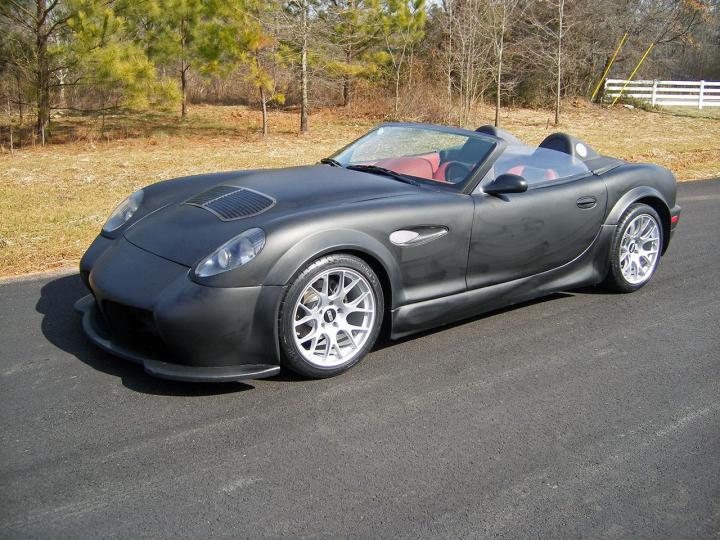
Back in the 1990s, Panoz was known for building race-winning track cars and a handful of road cars, but the company has gone off the radar until recently.
However, for its 25th anniversary Panoz seeks to remind the world that it still exists, and that it still builds sports cars. Enter the 25th Anniversary Esperante Spyder and Spyder GT.
Both models are updated versions of the Esperante, Panoz’s mainstay sports car. The chassis is roughly 70-percent aluminum, 20 percent carbon fiber, and 10 percent steel. The styling of the aluminum bodywork still looks pretty good, despite the design being over a decade old.
The base Spyder is offered with either a 430-horsepower 5.0-liter V8, or a 575-hp, 5.4-liter supercharged V8. Customers also get to choose between a six-speed manual or a six-speed automatic with paddle shifters.
Upgrading to the Spyder GT (shown above in prototype form via AutoBlog) nets carbon fiber body panels. The 575-hp supercharged V8 is standard on this model, but buyers can also opt for an 800 hp version.
Prices start at $189,000 for the Spyder, and $229,000 for the Spyder GT. To commemorate the company’s 25 anniversary, only 25 examples will be built.
That may seem like a lot for a car most people probably haven’t heard of, but considering the Esperante Spyder’s limited production run, lightweight bodywork, and powerful engines (especially that optional 800-hp V8), Panoz shouldn’t have any trouble finding takers.
After the run of 25th anniversary models is finished, Panoz hopes to build a new version of its Roadster in larger volumes, as well as build street-legal versions of its GTR-1 race car for individual customers.
None of those cars seem ready to compete with Ferrari or Porsche in the luxury department, but if Panoz can find enough buyers with titanium spines, this could be the beginning of an American sports-car renaissance.
Editors' Recommendations
- This Graco car seat lasts for ten years, and it’s 25% off for Black Friday
- Audi’s electric 2022 RS E-Tron GT is a concept that escaped the drawing board
- Fiat-Chrysler pressured dealers to take extra inventory to boost sales numbers
- Most people want to keep their cars away from full self-driving, study says
- 120 years later, fully electric black cabs are back in London


